Volatility Trading
$20.92
| Author(s) | |
|---|---|
| Format |
|
| Pages |
298 |
| Publication Year |
2013 |
In Volatility Trading, Sinclair offers you a quantitative model for measuring volatility in order to gain an edge in your everyday option trading endeavors. With an accessible, straightforward approach. He guides traders through the basics of option pricing, volatility measurement, hedging, money management, and trade evaluation. In addition, Sinclair explains the often-overlooked psychological aspects of trading, revealing both how behavioral psychology can create market conditions traders can take advantage of-and how it can lead them astray. Psychological biases, he asserts, are probably the drivers behind most sources of edge available to a volatility trader.
Author’s Introduction:
The concepts behind this type of trading are largely unchanged, but my emphasis has probably changed slightly. Although academics have continued to work on forecasting volatility, I think the improvements from the perspective of an option trader are now marginal. For example, the profitability of equity volatility long short portfolios has declined significantly over the past five years.
This would probably not be what I would choose to focus on now. So although I have slightly expanded the section on volatility forecasting, I think it is now more important than ever to look for situations where the odds are in our favor whether we can accurately measure and forecast volatility. To this end, I have added chapters on stylized facts of markets and the variance premium.
I have also expanded the chapter on psychology. The usefulness of behavioral psychology to traders is still a matter of debate. Traders themselves seem to be greatly polarized, either being true believers or completely dismissive. I make no apologies for being a believer. I know that studying this has helped me. This book is about trading volatility. More specifically, it is about using options to make trades that are primarily dependent on the range of the underlying instrument rather than its direction.
Contents:
- Option Pricing
- Volatility Measurement
- Stylized Facts about Returns Stylized Facts about Returns
- Volatility Forecasting
- Implied Volatility Dynamics
- Hedging
- Distribution of Hedged Option Positions
- Money Management
- Trade Evaluation
- Psychology
- Generating Returns through Volatility
- The VIX
- Leveraged ETFs
- Life Cycle of a Trade
Volatility Trading By Euan Sinclair pdf
31 reviews for Volatility Trading
Clear filtersOnly logged in customers who have purchased this product may leave a review.

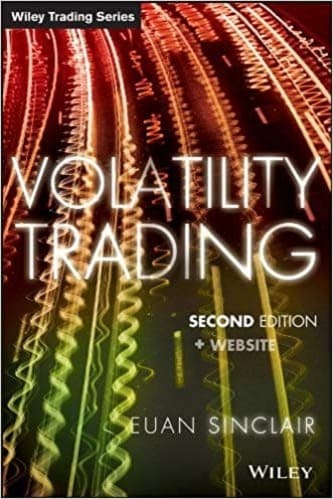
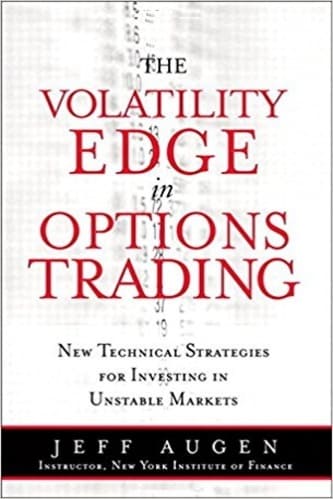
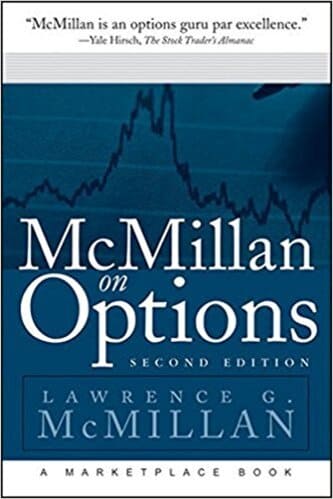
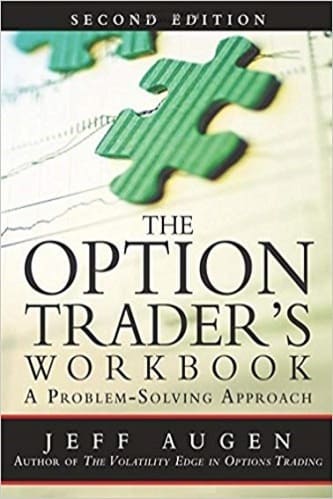


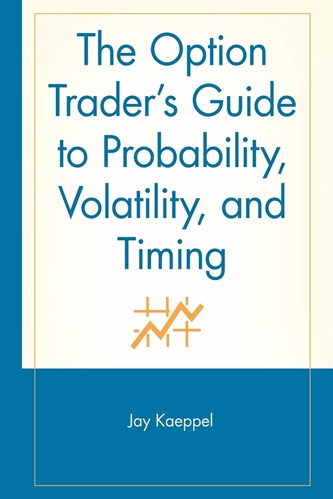
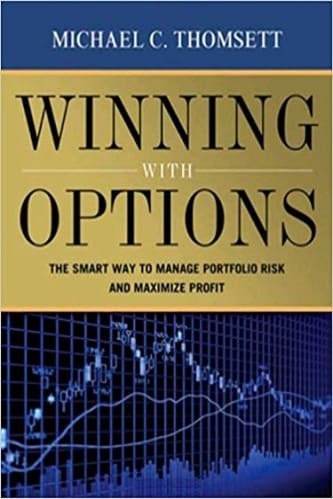
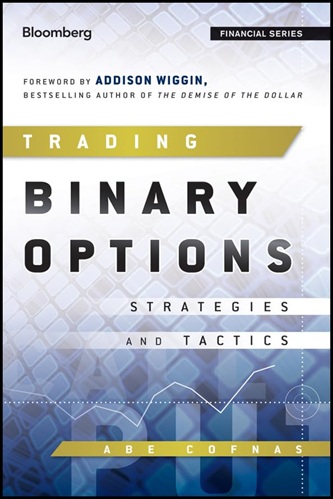
Jaxson Hodges (verified owner) –
Gives teorical background with strong practical aplication. The volatility game is more profitable and relaxing than directional. I make money following this book.
Makayla Leal (verified owner) –
Anyone who wants to deal seriously with the matter of volatility should not hesitate here! This book offers the optimal mix of mathematical accuracy and basic understanding. For me, the best book in this field I’ve ever read.
Andrew Booker (verified owner) –
Incomprehensible Mathematics. Save your money and time. Stay away from this book.
Beau Cortes (verified owner) –
I have just noticed there are no reviews in the UK for this marvellous book. I have been investing (and reading about it) for 25+ yrs and this book is in the top few investing books ive ever read. Yes it focus is volatility and quant methods, yes its aimed at professionals and traders; but even if you dont understand half of the book there is more valuable information in the other 50% then most books i have read on this game of ours.
This book will certainly improve your process whether Investor or trader. Indeed on my first read a lot of the math went way over my head due to not having the appropriate skills. Despite this, as an investor I was still able to find so much actionable information that I found in almost every sentence.
As an aside, to some of the other reviewers, a great investment idea could perhaps be to do the extra 1-2 years learning the math and accompanying finance theory to really get the most out of this book (and possibly investing/trading too).
This is an investment book that puts other investment books to shame. Here is an example gem from the brilliant, particularly insightful, chapter on psychology:
“Bluntly put, having great psychological control is totally irrelevant unless you have and edge and unless you have a money management system to capture it,”
Finally a of small critique. it is a little too US-centric (baseball…)
Mariana Hinton (verified owner) –
Advances materials and useful.
Josie Butler (verified owner) –
The book talks about the volatility and how to estimate it, without given practical examples on how to use the theory in practical trading
Mathew Knox (verified owner) –
I do not know who are reviewing this book, having read it, I conclude the other reviews are written by shams. The book covers volatility like so many other authors have done in abundance. Only difference, the author impresses us with his impractical calculus/mathematical formulas. Or rather wantonly to silence his critics. What is the one essential trading strategy it covers? Selling indices straddles or strangles. Does it explain when and how or what? No.
It does reveal couple of other critical “facts”, traditional buy and hold works and buying call or put options will fail.
Fools will be so impressed by the density of the material and will automatically accept the author’s genius at face value. Pass. Useless techno babble.
Khaleesi James (verified owner) –
Outstanding, must-have book for options traders. Along with Natenburg, one of the best books on practical trading for vol traders.
Kallie Farmer (verified owner) –
Out of my large library of options books, this one is by far the best. As a very long time professional equity trader making the transition to derivatives trading, I was extremely impressed with both the content and way this book was written. It is a book written by a trader, for traders. If there was only one book to get on the subject it would definitely be this one. I recommend it to both newbies and advanced professionals alike.
Nataly Cameron (verified owner) –
If you do not have a very strong mathematical background up to and including differential equations, you will be very disappointed in this book. I bottomed out after my first year of calculus. I am a spread trader always looking to improve my edge.
I gave this book 5 stars. The fact that the math was above my understanding does not make it a bad book. I’m sure it is a great book for the right trader or quant
Hudson McCormick (verified owner) –
Given how many books on quantitative finance have been published, it is sort of shocking how few have useful information, and frustrating how few have useful *new* information. Volatility Trading contained several ideas new to this professional options quant, clearly explained and well supported (his treatment of Browne ratio comes to mind). I put it in my “top” quality category along with Tavella and Randall, Gatheral, Jarrow, and Wilmott.
The book is aimed at quants, though I believe it is readable by anyone with an advanced degree in a math-heavy subject. It provides a truly practical guide to most of the quantitative issues that come up when rationally considering trades in options and other volatility-sensitive securities.
Jaxson McLaughlin (verified owner) –
This book focus less on mathematical side of volatility, instead it gives more emphasis on practical side of things. I especially like the chapter on VIX ETNs. Only one thing I’m not satisfied with this book; some chapters are not covered in a great depth (maybe Dr Sinclair did it to make this book more approachable to practitioners).
Jamison Evans (verified owner) –
Volatility Trading is a practical guide to options trading that is both informative to newcomers to the asset class as well as a valuable reference to the experienced options trader. The mathematics are laid out so that they can be easily followed. The text is readable, clear and offers real world insights into its application and related pitfalls to be mindful of. I highly recommend it to all traders.
Chapter 10 is a standout to me which is expanded from the first edition. It is about trading psychology and this chapter alone is worth the price of the book. Sinclair acknowledges his lack of academic credentials in the field but his experience allows him to present insights that are far more useful than what can be drawn from academic studies. I have read a number of books on the topic and frankly wasted a lot of time in doing so. This is the most practical and concise piece that I have come across on the topic. His plainly stated assertion that confidence comes from competence and competence comes from knowing exactly what your edge is and most everything else is misguided is as accurate as anything I have seen on the topic. Even for the more experienced traders the section on self-attribution bias is a helpful reminder that you are not as good as your results in busy, volatile market and usually not as bad as your results in slow, tight markets, is a helpful reminder when trying to assess your own performance on any time scale. There is a good summary of much of the literature on the most common mistakes made in the evaluation process as well. The points he makes about the importance of finding a partner and what to look for should be strongly considered by every new trader. These relationships have a greater impact on careers than is commonly acknowledged.
This book is worth the time to go through and a valuable guide to have on your bookshelf.
Jayleen Pugh (verified owner) –
This is a book about trading volatility professionally. The target audience is those who already have some familiarity with options theory and are ready to use math in their market analysis. One does not need to be a professional options trader but the book instructs a professional attitude toward trading.
It accomplishes two goals very well. First, it delivers a set of knowledge about volatility markets. Second, it delivers the message that trading is hard and demands deliberate focus. So while the actual material is on the volatility markets, the theme of the book is that one should use all of tools at our disposal, use a systematic methodology and target continuous improvement. In short, if you wish to learn about volatility trading or, in general, how to approach trading of any sort as a business, you will benefit greatly from Volatility Trading. This is not idle talk. I ran an options trading desk and purchased for each person working for me.
Despite having a PhD (yes, despite) and including the relevant math, Sinclair is clear and overwhelmingly practical. Even for those that already trade volatility products, as I do, there is much value in the material. He does much work for us, including:
1) Reading a vast amount of academic and industry research, as well as conducting his own; then highlighting the most valuable nuggets.
2) He puts into clear prose and practical context those most valuable results. For example, the explanation of why leveraged ETF’s erode in value but are not “destined to go to zero” was illustrated nicely with text that complemented the math. Math is necessary and adds to the explanation.
3) He puts the theory into the context of practical reality. Although this is most obvious when he discusses the shortcomings but utility of the Black-Scholes framework, it comes through elsewhere such as under what circumstances higher efficiency estimators fail back into the daily close-close estimator.
That said, there is subject matter relevant to volatility trading that is not covered but still important to volatility trading. For example, volatility options (VIX options) or dealing with portfolios of options. The subjects covered are, for the most part, covered well – the section on behavioral finance is, understandably, given only a quick run through. Even in this section, the practical nature of Sinclair’s outlook shows through as he discusses that we should mind our own foibles for mistakes but also look to those same foibles for sources of potential edge.
From the perspective of trading as a professional, Sinclair bangs the drum on:
1) Quantify what you can.
2) Remember #1, but using non-quantifiable information is valuable and, often, necessary.
3) Understanding that trading, particularly options trading that is so path dependent, is about playing the probabilities. Keep the long run in mind.
4) Trading requires having an edge; to best exploit it, understand it and the tools you use.
5) Emphasize the practical, particularly developing a process.
I cannot provide a review of the web site as I have not yet used it.
I will conclude with Sinclair’s own words: “Successful trading is about developing a consistent process.” Knowledge is essential but insufficient. I think that is what Euan Sinclair would hope the reader came away with and kept. Everything else can be researched – and much of it can be found in “Volatility Trading.” I find it very valuable and highly recommend it.
Eve Baldwin (verified owner) –
I had not intended to write a review for this book. Not because it’s undeserving of one, to the contrary, but because other reviewers such as Bachelier and Donninger have already provided very thorough reviews which should tell the prospective reader everything they need to know about why to buy this book, or not. However, I see that a recent reviewer has questioned not just the merits of the book’s content, but has also concluded that those positive reviewers must be shams. That’s a shame that should be set right, as a reader who is truly interested in volatility trading would be deprived of a valuable resource if they were to put much stock in that particular opinion.
The only problem with this book is that the author does not pander to the desire of many retail traders to be presented with simple pat answers and strategies on how to trade. You are instead presented with a very thorough discussion of the mechanics and processes that underly volatility trading as practiced by professionals. The math can be a bit daunting for those, like me, who are long out of school and in need of some revision work in calculus, but in truth only a little of it will be beyond the reader who is prepared to make an effort. Equally to the point, confirming the validity of the math isn’t essential to understanding the points being discussed and taking away a lot of valuable knowledge. A reader finding the mathematical going challenging might wish to first try the author’s other book “Option Trading” which covers much of the preparatory ground at a somewhat gentler pace. That worked well for me.
As an aspiring and developing trader of options, in the past few years I have read pretty much anything I could get my hands on from the ridiculously simplistic (for example, “Can I Make a Living Trading Options?”) to the exceedingly academic (such as Gatheral’s “The Volatility Surface”) and everywhere in between. This book is one of the few that hits the sweet-spot. It concedes nothing at either end by not providing simplistic answers to a complex subject, nor offering theoretical digressions that fail to come back to practical trading issues. Instead, what is presented is the foundation work upon which a sound volatility trading process can be built. It’s up to the reader to decide if they want to pick up the tools, but having read the book you will know what those tools are and what you might do with them. Certainly, some of the content will be beyond the ability of many retail traders to implement, but of equal value the book will provide insight into the rigour and depth of knowledge that is being brought to bear by the counter-parties one is trading against. Most of them, like the author, are professional traders and many earn their livings trading this way.
As to the question of the integrity of some of the previous 5 star reviews, the interested reader might do a little google research on the the author and on a couple of the reviewers. For the author, there are a goodly number of published articles on trading (Active Trader), contributions to forums such Wilmott & NP, and presentations at industry events to judge by. For the reviewers, one might wish to follow some of the clues provided in their profiles. They too are very credible in the field, offer much of value to consider, and the reviews are undoubtedly the product of individuals with a serious depth of knowledge on the subject matter.
Ultimately, I would recommend this book only to those who have left the hope of pat answers and strategies behind. If one has got to the point of recognizing that successful trading requires engaging with the details and looking hard at the mechanics and ideas in order to build a trading process, then this book is a helpful step along the way.
Frankie Cuevas (verified owner) –
Complete, understandable and well writing
Jaylen Stephenson (verified owner) –
Book was very very advanced. I’ve traded volatility before and this book was way over my head. Might be a good book for a mathematician, but it wasn’t for me.
Phillip Maxwell (verified owner) –
This book will not help you Improve your vol trading strategy. However, if you already have a profitable volatility strategy and want a formal education on the asset class, you might learn a couple things.
Judson Myers (verified owner) –
This book is great. It covers almost the whole circuit of volatility trading. Although the author claims this book is the advanced one comparing to his other book(option trading), it is not that hard. All mathematics involved are BS formula and basic calculus, maybe a little bit differential equations as well.
Adele James (verified owner) –
I guess there are some very brilliant traders out there who really belong in Mensa. I believe Euan Sinclair is a physicist. There were so many formulas and equations to support theory that I must admit I finally realized I would need to spend $40,000 to go back to school for a PhD in order to follow what he says. I am sure it’s brilliant. I made it to page 70. I may continue and see if I can glean something from this, but if you are looking for simple options ideas to trade and make money this might not be the easiest way to find out about it.
Elijah Chambers (verified owner) –
This is not for casual reading by any means and I would say that only a select audience will benefit from this but the material is useful. Ultimately the deeper the understanding of the underlying assumptions, the better you can seek out trading opportunities as many of the assumptions in the real world fall apart because of a number of issues. I felt that the author did a fine job in presenting a rigorous mathematically foundation that for traders or risk managers, can and will be useful.
Kyla Adams (verified owner) –
Not for average reader, does not show any strategies of such, does talks about a clock is made in detail
Eliana Phillips (verified owner) –
I give myself three stars for my comprehension of Euan Sinclair’s “Volatility Trading”. As a retired engineer and experienced option trader, I could conceptually follow some of Sinclair’s math, but it’s been difficult to apply his models and strategies to my retail trading. The target audience appears to be quants, market makers and option arbitrage traders. They probably appreciate and comprehend Sinclair’s mathematical comparison of volatility models and strategies far more than a retired engineer who had to constantly refer to his college textbooks. Hopefully Sinclair will publish another edition that’s dumbed down for people like me.
Stephanie Avila (verified owner) –
I recently finished a Master’s in quant finance and was looking to improve my real-world knowledge of options and volatility trading. This book has been an excellent resource so far.
It’s well written and houses lots of useful information. Sinclair is thorough and honest in his presentation of ideas. The concepts flow in an organized way, where math is discussed in relation to different stages in the trading process.
I’d recommend this to anyone interested in math and trading.
Ryder Hanson (verified owner) –
If you are looking for serious material about volatility this one is excellent. It is well written and extensive about the topics .
Cedric Nolan (verified owner) –
When I got the book, I was amazed at how small it was, and less than 300 pages! As I read through it, I was fascinated by Dr. Sinclair’s analogies to the gambling world. He also gave some great references at the end of the book which included explanations of their uses for the aspiring option trader. Some of the math and discussions of distributions went over my head a bit, but the references he gave at the end should help me to understand those topics as well and piece everything together. I may do more research on those references and read the book again.
Rayan Drake (verified owner) –
I’ve given this a 4 star review because the book is well written and provides deep analysis into an important technical area for trading that is quite difficult to find without access to proprietary trading IP. The book does a good job at approaching technical and formulaic breakdown of estimating Volatility and its historical trends.
The reason I’m writing this review, however, is because I’ve now just come across the second written error in the book that mistakenly describes either a complicated formula or displayed data. As this book covers complicated methodololgy that readers will no doubt attempt to use to make money in the market, I feel like such errors have no place in this book. The first I came across mistakenly referenced a figure in one of the Volatility estimation formulas as “Close price” when it in fact was referencing a figure in the formula for “Open price”. I came across that issue the other day and didn’t worry too much about it. I’ve however just now came across two charts on page 46 of the 2nd edition that have duplicate descriptions, despite describing opposite data. The two charts are supposed to show the differing levels of Vol distribution during Bull vs Bull markets and the data is correct. However, both charts are labelled as describing the “Volatility Distribution during Bear markets”.
If you’re well versed in Volatility and its general trends, you will likely catch these errors and can still benefit from the mistaken descriptions (that is why I’ve still given the book a 4 star). However, I do find it somewhat unacceptable that a book of this price has more than one glaring technical error. These formulas and trends may be used by readers to risk their personal money deploying trading strategies outlined in the book; the reader should be highly confident that such obvious errors are not present throughout the literature.
Jaiden Barajas (verified owner) –
This is neither a “get rich quick” book nor an elementary introduction to options. The author assumes a fairly solid background in options, including the details of the Black-Scholes-Merton model, option Greeks, and familiarity with the payoffs of various common option strategies. This is is a survey of how to trade volatility as an asset class using options as a vehicle. The intermediate to advanced trader will find much to like here, while the novice may seek clearer, more detailed explanations elsewhere. I particularly liked the chapters on Money Management, Trade Evaluation, and The VIX. The chapter on Implied Volatility Dynamics was also good. The chapter on Psychology was yet another rehash of the same old material, but is worth reading. Sinclair, a PhD in theoretical physics, was obviously holding back on the level of his mathematical exposition, which while diminishing the appeal of the book somewhat, makes it accessible to a wider audience. Though lacking in some areas, I give it five stars for the clarity of the writing and the singular focus on volatility as the single most important determinant in option behavior.
Keilani Wiley (verified owner) –
The second edition of Volatility Trading by Euan Sinclair is one of the most comprehensive and insightful books on volatility trading that I have ever read. While the book uses formulas to convey mathematical and theoretical concepts, the insights in the book were clearly gained from years of practical trading experience.
The author wisely begins with an explanation of the Black-Scholes-Merton and even more importantly includes a discussion of the BSM model assumptions and its deficiencies. In his chapter on “Stylized Facts about Returns and Volatility,” Sinclair explains how volatility actually behaves in the real world and offers numerous graphs to illustrate these relationships. “Implied Volatility Dynamics” goes into even more detail on how implied volatility evolves over time.
I particularly enjoyed his chapters on “Generating Returns through Volatility” and the “VIX.” These chapters investigate the variance premium, its sources, and how to exploit it in practice.
There are many pearls of wisdom in the book, but perhaps the most important is Sinclair’s continuous emphasis on the need to identify and systematically exploit a trading edge. When trading options, this typically means exploiting anomalies between implied and forecasted future realized volatility.
Finally, Sinclair goes beyond volatility trading and includes several detailed chapters on risk management, position sizing, and psychological pitfalls.
I have been an investment professional for over 30 years and still found new insights in this book as well as several interesting research and strategy ideas to explore.
Lydia Henderson (verified owner) –
The author is a physicist who is a trader by both have avocation and vocation. His analysis of all aspects of volatility is beautifully done and described. Yes, there is mathematics involved, but it is mostly from a practical, trader’s perspective and not from a theoretical financial engineers perspective. Even if the math is too much for you, the text summarizes the key points and implications in words and with trading examples from the authors own experience.
I am in intermediate trader with a scientific background. I will be going back to this text as my experience grows, to absorb the finer points presented here. It is not an easy read but a definitely worthwhile one.
In addition, The last chapter is a summary of books, articles, and websites the author has found useful. I wish more authors of trading texts would do this for their readers: a very valuable feature.
Anyone trading volatility or wishing to learn about volatility should have this book on their shelf and read.
Lea Brown (verified owner) –
To start, Volatility Trading by Euan Sinclair is one of the BEST if not THE BEST book in the market place on the topic of Volatility Trading. I have read the book multiple times. There is so much value to be gained by reading the book that I’ll probably read it multiple times again. Relative to what is out there in the market place, this book is far and beyond and also much more applicable to use and enhance a trading strategy. In total the book is extremely strong but I’ll highlight my favorite areas. Volatility Measurement, Stylized Facts about Returns and Volatility, Volatility Forecasting, & Implied Volatility Dynamics were extremely meaty chapters but in a good way; large value added, read them. Euan actually does something most writers can’t do. Most books in this area on the market place are so theoretical; when I first read Volatility Trading it was a breathe of fresh air to the highest extent. A book that applies the theoretical side but with very real world applications that also have the ability to enhance one’s risk-adjusted returns; in other words, this book adds value massively to your P&L. Highly useful and applicable information to better your game and gain an edge in the market place. The Chapter on Hedging was exceptional, that chapter was fantastic in going through the different hedging methodologies he covers, once again, clear value added chapter. Of course, there are others but this was an excellent chapter and I highly suggest taking it to heart. The Distribution of Hedged Options Positions was a great read. The Money Management chapter absolutely had real value to be gained but the Trade Evaluation chapter could be the most valuable in the entire book and that doesn’t de-value the value gains from the other chapters. There is so much to be gained from this chapter to analyze and evaluate ones performance of their trading strategy. Trade evaluation is an extremely valuable chapter. The Psychology chapter was a great read, more real applications and enhancing material. The Generating Returns through Volatility was absolutely fantastic, great again. In general, without re-writing the book in the review, the book is a MUST READ. If you are a money manager, if you are a trader, if the financial markets are how you make money and you haven’t read this book then in my opinion you are doing a disservice to yourself, your payout, and your clients/shareholders. There is so many ways to enhance ones game in this book to have more of an edge in the market place that the fact Euan wrote this book and gave it to the markets is a gift in itself. Be thankful he wrote this book. In conclusion, I used value added, value gained, fantastic, great, exceptional, performance enhancing and repeated them for a reason, that’s because its true. If you want to improve your game, and of course, potentially improve your P&L then read this book. I hope this review is helpful for people out there.